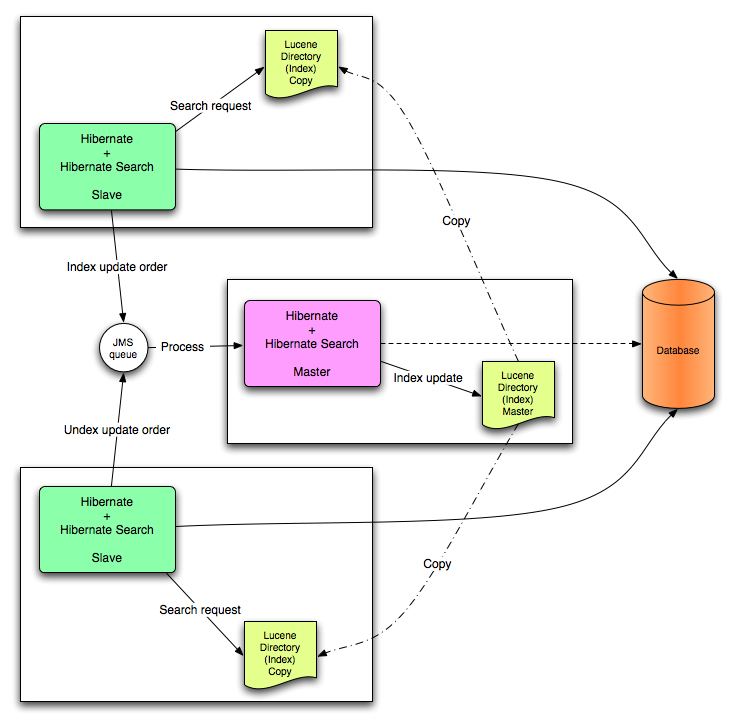3.5. JMS Master/Slave configuration
This section describes in greater detail how to configure the Master / Slaves Hibernate Search architecture.

JMS Master/Slave architecture overview.
3.5.1. Slave nodes
Every index update operation is sent to a JMS queue. Index querying operations are executed on a local index copy.
Example 3.6. JMS Slave configuration
### slave configuration ## DirectoryProvider # (remote) master location hibernate.search.default.sourceBase = /mnt/mastervolume/lucenedirs/mastercopy # local copy location hibernate.search.default.indexBase = /Users/prod/lucenedirs # refresh every half hour hibernate.search.default.refresh = 1800 # appropriate directory provider hibernate.search.default.directory_provider = org.hibernate.search.store.FSSlaveDirectoryProvider ## Backend configuration hibernate.search.worker.backend = jms hibernate.search.worker.jms.connection_factory = /ConnectionFactory hibernate.search.worker.jms.queue = queue/hibernatesearch #optional jndi configuration (check your JMS provider for more information) ## Optional asynchronous execution strategy # hibernate.search.worker.execution = async # hibernate.search.worker.thread_pool.size = 2 # hibernate.search.worker.buffer_queue.max = 50
A file system local copy is recommended for faster search results.
The refresh period should be higher than the expected time copy.

